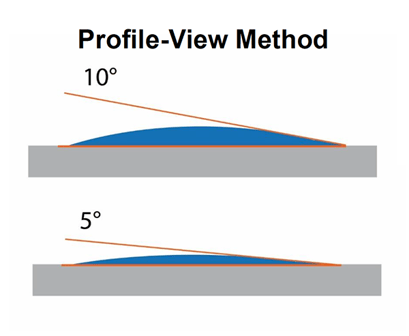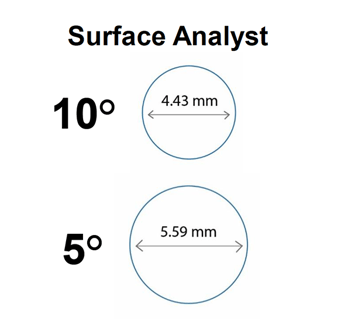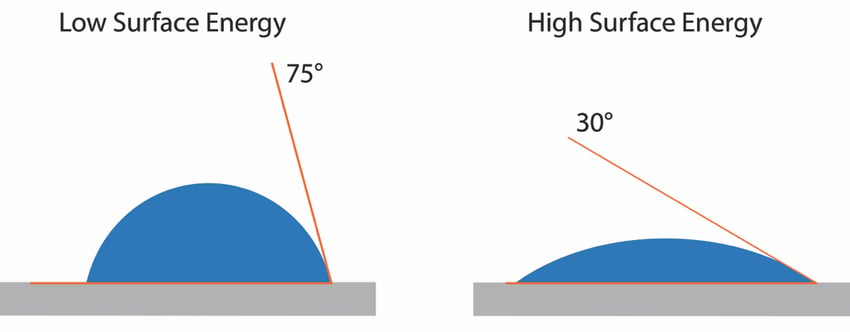The desktop goniometer is a widely-used and accepted method of obtaining surface energy measurements of materials in the lab setting.
For those unfamiliar, the goniometer uses the “profile-view method,” with the water contact angle obtained optically as viewed from the side.
This method effectively only measures two points of the droplet.
When it comes to low water contact angles, engineers, quality managers, and operators alike need to be aware of the problems that arise in using this method.
Using the illustration below, we can immediately see the problem that arises in finding a clear edge with the profile-view method, especially as the contact angle moves below 20 degrees.

Measuring the droplet from the side presents multiple problems in obtaining accurate and reliable data:
- Only 2 data points are collected, resulting incomplete and subjective data, especially on non-round droplets.
- The lower the contact angle, the more difficult it is to discern the edge at which the measurement is formed.
- Less discernible visual differences in low-contact angle situations compromise the quality and accuracy of the optical gathering of the image.
Simply put, measuring water contact angle in profile-view using a goniometer leaves more specific, more reliable, and highly critical data on the table.
Get hands-on with your surface cleanliness with the Surface Analyst 5001.
Alternatively, measuring the droplet from overhead, as performed by the Surface Analyst, solves each of the above problems and provides a tool that can be used in a lesser-controlled environment, like the production floor:

- The edge of the droplet is clearly defined, drastically reducing the room for error in the calculation of droplet diameters and subsequent area calculations.
- Non-round droplets caused by a textured surface or chemical heterogeneity still provide a highly accurate contact angle measurement due to the averaging of points around the entire droplet perimeter.
- Specific and easy quantification of these variables as an effect of overhead viewing means repeatability drastically increases by eliminating the need for user input.
Using the average of a series of contact angle measurements taken around the entire perimeter of the droplet, with the edge of the droplet being clearly defined, simply provides a more precise and more reliable contact angle measurement.
The implications of these differences to business and process goals are potentially too great to be ignored.
Contact us today to learn more about how you’re using contact angle and how it's impacting your business.
Read the full white paper on the differences between these two devices here: Advanced Goniometry for Manufacturing

